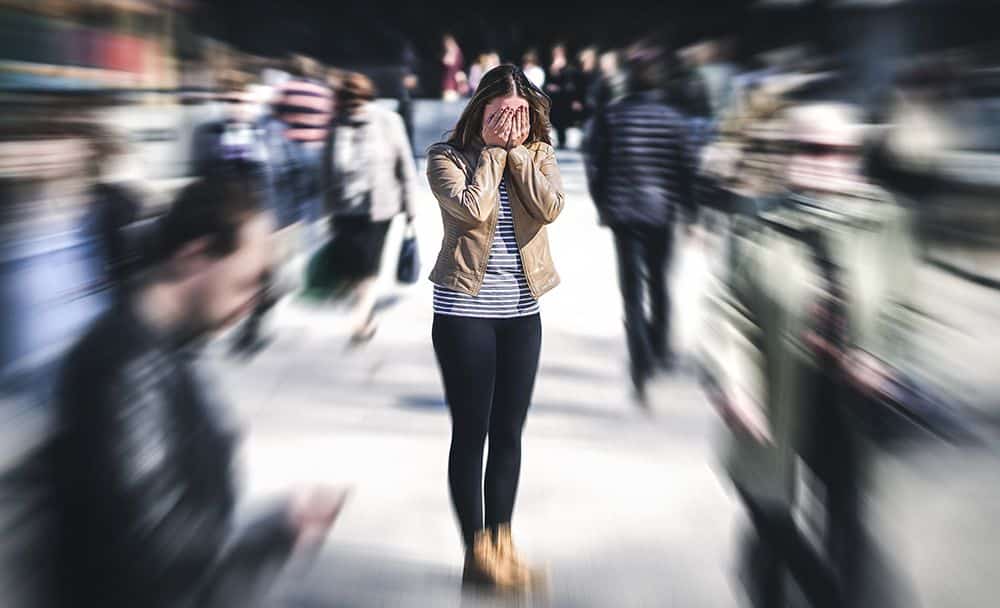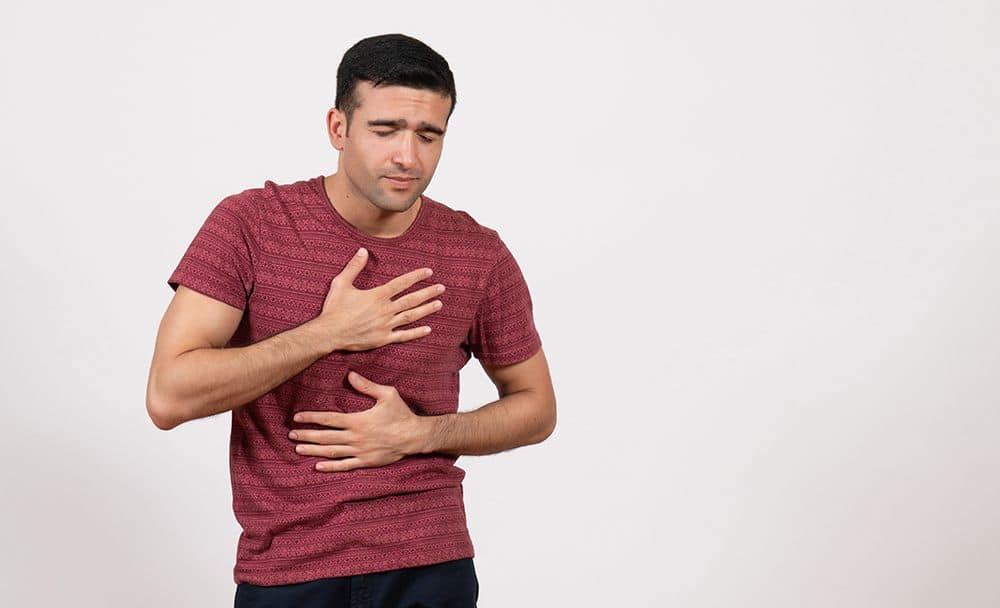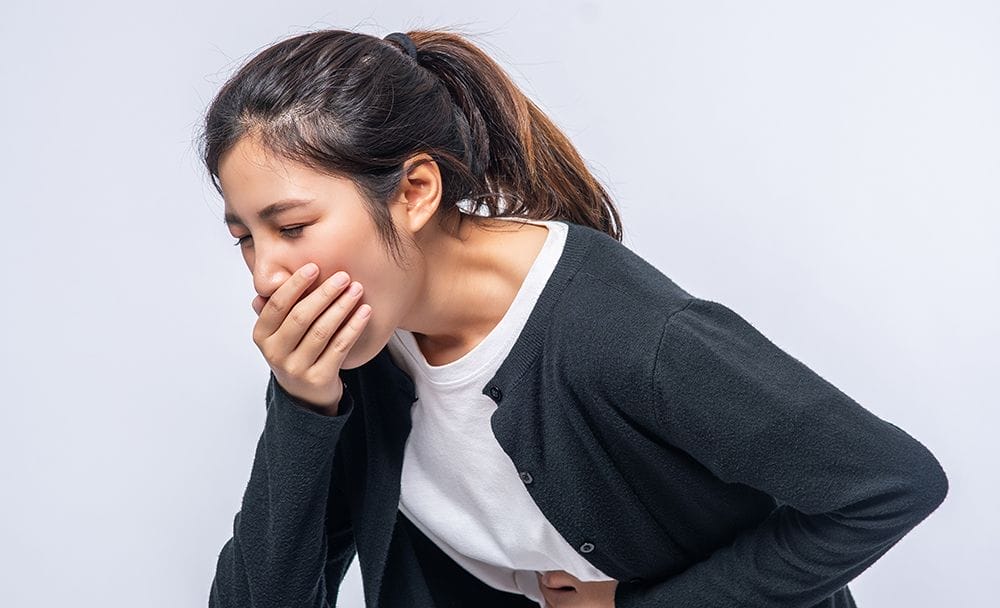
Panic attacks are intense, sudden episodes of overwhelming fear and anxiety that can be debilitating and distressing for those who experience them. These panic attacks can come without warning and may last for a few minutes to several hours. The panic attack symptoms are often similar to that of a heart attack. The main symptoms of panic attack are hyperventilation, heart racing, and chest pain, leading many individuals to seek emergency medical attention. [1] Upon analyzing the symptomatology, it was observed that the Dosha involved is primarily Kapha, accompanied by Vata vitiation. [4] Understanding the signs and symptoms of panic attacks is crucial for early recognition, appropriate management, and providing support for those who suffer from this distressing condition. In this article, we will explore in detail the various signs and symptoms of panic attacks.
What are the symptoms of a panic attack?
Rapid Heartbeat
One of the hallmark panic attack symptoms in adults is a rapid heartbeat or palpitations. During an attack, the heart rate may significantly increase, leading to a pounding sensation in the chest. This palpable heartbeat can be distressing and is often a major cause of concern for individuals experiencing panic attacks. [2]
Shortness of Breath
Individuals undergoing a panic attack may also experience difficulty breathing or a sensation of being unable to get enough air. This feeling of breathlessness can be quite frightening and is often accompanied by a sense of suffocation or choking. [3]
Chest Pain and Discomfort

Chest pain is one of the most common panic attack symptoms, and it is one of the reasons why many people mistake panic attacks for heart attacks. [2]
Trembling or Shaking
Trembling or shaking of the hands, legs, or even the entire body is yet another of the several characteristic panic attack symptoms. The nervous system’s response to intense fear can trigger this physical manifestation. [2]
Dizziness and Lightheadedness
Many individuals experiencing a panic attack may feel dizzy, weak, or lightheaded. This sensation can be disorienting and may contribute to fear and anxiety during the episode. [2]
Sweating and Chills
Sudden and excessive sweating, even in a cool environment, is one of the most common woman panic attack symptoms. Conversely, some individuals may experience chills and feel cold during the episode. [2]
Nausea

Nausea is a frequent occurrence during panic attacks. The heightened state of anxiety can affect the digestive system, leading to these uncomfortable sensations. [3]
Fear of Losing Control or Going Crazy
Individuals going through a panic attack often report an overwhelming fear of losing control or going crazy. This fear stems from the intense and distressing nature of the attack, causing a sense of helplessness and desperation. [3]
Fear of Death or Impending Doom
A common feature of panic attacks is the fear of dying or the perception of impending doom. This feeling of imminent catastrophe is linked to the intense anxiety experienced during the attack and is one of the most common panic attack symptoms at night. [2]
Numbness or Tingling Sensations
Some individuals may experience numbness in the hands or tingling sensations in their extremities during a panic attack. This is due to the body’s heightened stress response, which can affect nerve conduction. [2]
Feelings of Detachment or Unreality
During a panic attack, some people may experience feelings of detachment from themselves or a sense of unreality. [3]
Rapid Thoughts (Racing Mind)
A racing mind is a common cognitive panic attack symptoms. Thoughts of intense worry about when the next panic attack will happen may race uncontrollably, and individuals may have difficulty focusing or processing information. [2] This excited state of mind shows a resemblance to the Chittodwega in Ayurvedic science. [5]
Hot Flashes
Hot flashes are frequent panic attack symptoms during panic attacks. The body’s autonomic response to stress can lead to sudden changes in body temperature. [3]
FAQs
What are some of the treatment options for panic attack symptoms or anxiety disorders?
According to research the planned treatment involves Nasya (nasal administration) and Abhyanga (massage), followed by Shamanaushadhis (internal medicines). Brahmi gritha (medicated ghee) is commonly used for Paana (internal administration) as part of the treatment.
Name some Ayurvedic herbs that are good for Ghabrahat or panic attack symptoms in Hindi?
Some herbs that can help deal with panic attacks include Ashwagandha, Brahmi, Tulsi, Lemon balm, and Bhringaraj.
Is it true that female hormones can cause panic attack symptoms?
Women are at a higher risk of hormone-related panic attacks compared to men. This susceptibility is attributed to the greater prevalence of sexual hormone imbalances in women, stemming from the significant physiological changes they experience throughout their lives. Moreover, women are ten times more likely than men to develop hyperthyroidism, further contributing to the increased vulnerability to panic attacks related to hormonal factors.
Conclusion
Panic attacks are distressing episodes of intense fear and anxiety that can significantly impact an individual’s well-being. Recognizing the signs and panic attack symptoms is crucial for early identification and appropriate management. With proper treatment and coping strategies, individuals can learn to manage panic attacks and improve their overall quality of life.
Disclaimer:
This article is written from a health and wellness perspective only and is not a piece of medical advice. Kindly seek the help of a certified medical practitioner before initiating any treatment.
References:
















